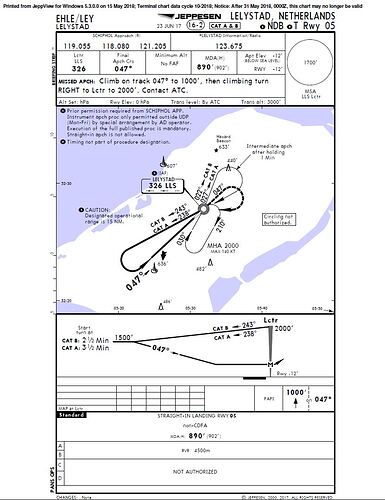I don’t know exactly from which direction you were approaching so I just took a random arrival. The first thing to understand is that the arrival / approach to an airport is split into segments:
- Arrival
- Initial Approach
- Intermediate Approach
- Final Approach
- Missed Approach (which itself is split into the same phases above minus arrival)
Each of those phases serve a purpose in maneuvering, slowing down and configuring the aircraft for approach.
Arrival
The Arrival segment starts from where the en-route segment (airway) is left and ends at the Initial Approach Fix (IAF). This segment is used to slow down the aircraft and descent for approach, it often ends in a holding pattern over the IAF.
Initial
The initial approach starts at the IAF and ends at the Intermediate Fix (IF) the IF is located on the extended centerline (point of localizer intercept) usually a few miles (minimum 2 nm) prior glideslope intercept or start of descent on non-precision approach.
Intermediate
Intermediate approach is the usually straight segment between the IF and the FAP - Final Approach Point (Precision or APV approach) or FAF - Final Approach Fix (non-precision approach).
Final
The final approach starts at the FAF or FAP and ends at the Missed Approach Point (MAPt). The MAPt is usually the point where the glidepath intercepts the Decision Altitude. The approach is then either continued to a landing if sufficient visual references are attained or a missed-approach is executed if not.
Where can you find each of those phases?
En-route Segment
If you open Skyvector you can see the point PUMAL I’m using in the example below, is the point where you leave the en-route (airway) system. This is where the Standard Instrument Arrival (STAR) starts.
Arrival Chart
The Arrival segment, commonly referred to as Standard Instrument Arrival (STAR) can be found on the arrival chart, I’ve included an example below:
Transition
The initial approach can be on a separate chart called a “Transition”. The “transition” refers to the transition from the IAF and the IF. On some approaches and on smaller airports there isn’t a transition and the initial approach segment is depicted on the instrument approach chart.
Below you can see a transition to the ILS 25R via the North. It looks like a snake, usually you’ll receive vectors or receive shortcuts from one end to the other, you rarely fly the whole transition. For example if its really quiet you can expect to fly from CLE direct TEBLA, shortcutting the whole transition (from IAF direct to IF) or receive similar vectors.
Approach Chart
Intermediate, final and missed approach are depicted on the instrument approach chart and in some cases the initial approach as well as discussed above:
If you now compare this chart with the VOR approach you will notice that the ILS approach chart starts at the IF, so the intermediate, final and missed approach are on the approach plate. The VOR approach plate starts at the IAF so in addition to the intermediate, final and missed approach segments the Initial approach is also depicted (no complex transition on a separate chart).
I think FS2020 automatically selects the whole transition which makes the arrival look like a long snake, if you can post a screenshot we can figure out for sure what is going on, but that is my guess.
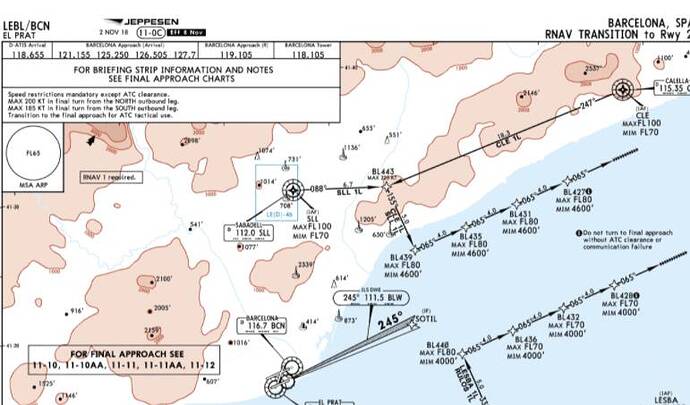


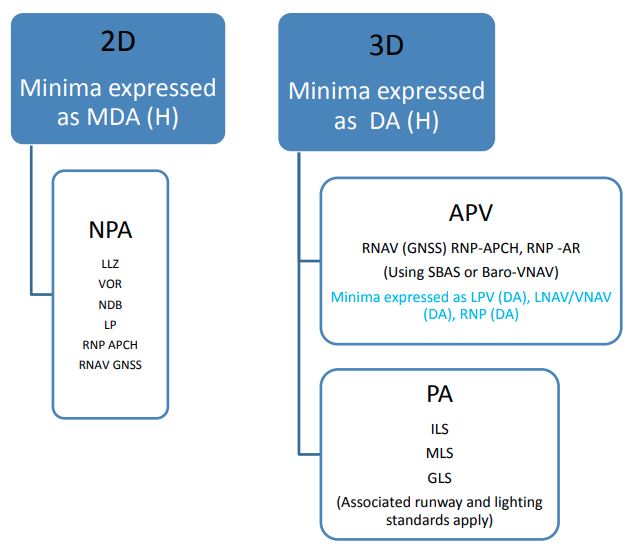
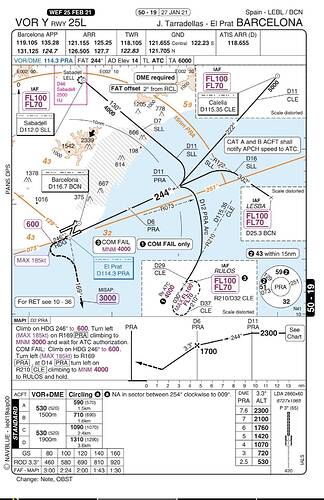
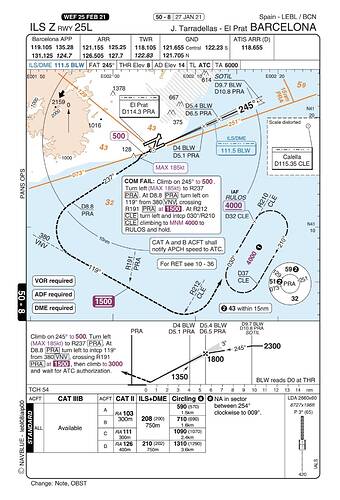
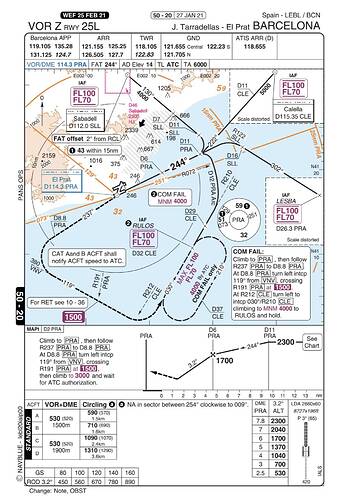


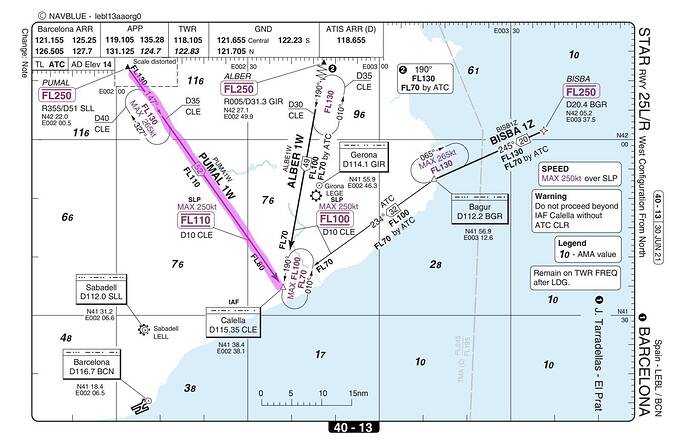
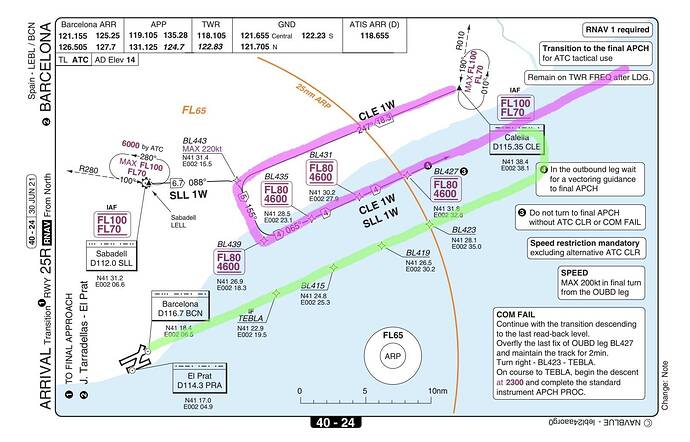
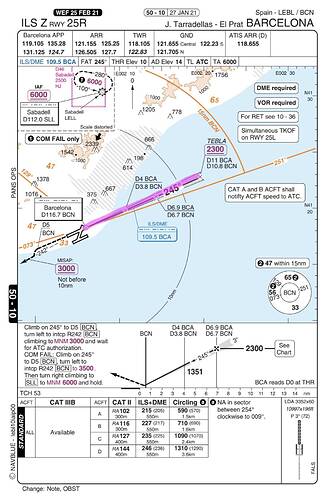
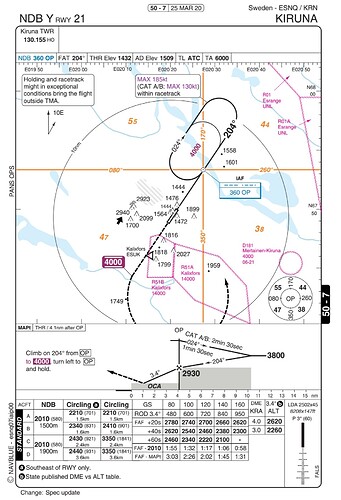
 .
.